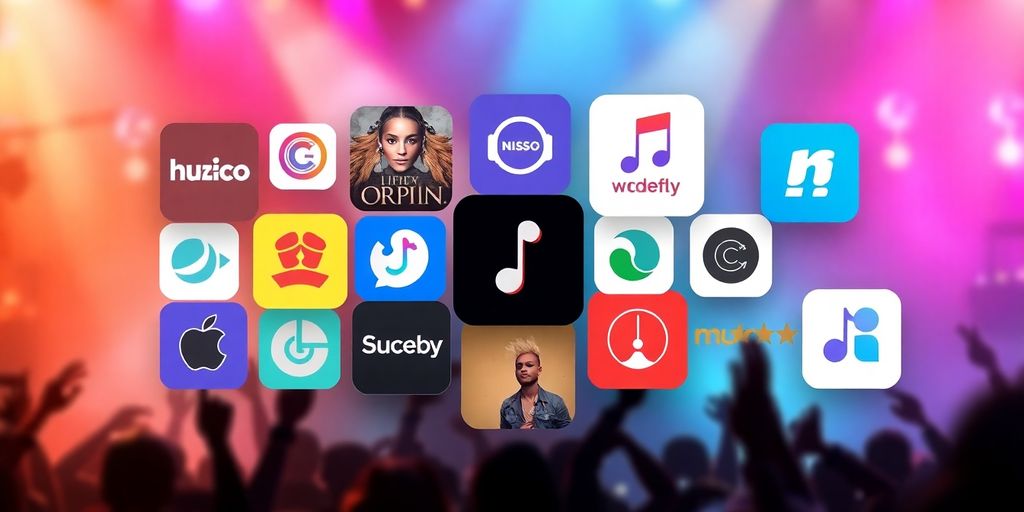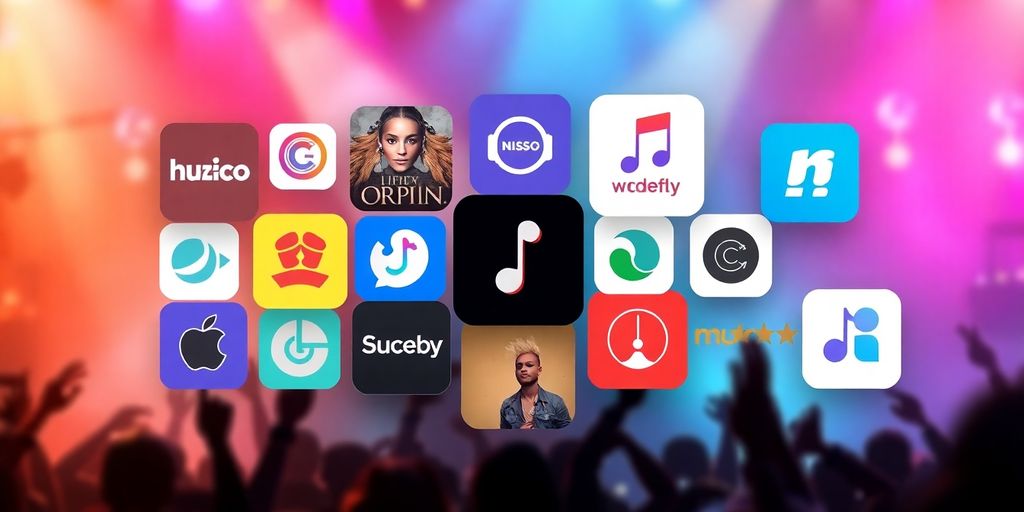Forecast: Apple Music Set to Surpass 110 Million Subscribers by 2025

Hey, so it looks like Apple Music is on a roll and could hit 110 million subscribers by 2025. That’s what some analysts are saying, anyway. With all the streaming services out there, it’s interesting to see how Apple is planning to keep up and even surpass some of its competitors. They’ve been making some moves lately, and it’s clear they’re not slowing down anytime soon. Let’s dive into what’s driving this growth and what the future might hold for Apple Music.
Key Takeaways
- Apple Music is expected to reach 110 million subscribers by 2025, according to analysts.
- The service is expanding into new markets and forming partnerships to boost growth.
- Apple Music’s integration with other Apple services plays a big role in attracting subscribers.
- Price increases, especially in student plans, might impact subscriber growth.
- Competitors like Spotify and Amazon Music are also growing, but Apple Music has unique strategies.
Apple Music’s Growth Trajectory

Factors Driving Subscriber Growth
Apple Music is on a roll, with subscriber numbers climbing steadily. One big reason is the integration with other Apple services. People love how seamlessly it all works together. Plus, Apple keeps adding new features and exclusive content, making it even more appealing.
- Integration with Apple Devices: Apple Music works smoothly with iPhones, iPads, and Macs, which is a huge plus for Apple users.
- Exclusive Content: From special releases to artist collaborations, Apple Music offers unique content you won’t find elsewhere.
- Personalized Playlists: Using AI technology, Apple Music curates playlists that feel just right for each user.
Comparison with Competitors
When you look at the competition, Apple Music holds its own pretty well. It’s not just about the music; it’s about the whole experience. Spotify might have more users, but Apple Music offers a different kind of value.
| Service | Subscribers (2025) | Key Features |
|---|---|---|
| Apple Music | 110 million | Integration, exclusives |
| Spotify | 100.6 million | Extensive library, podcasts |
| Amazon Music | 56.9 million | Voice control, Prime benefits |
Impact of Price Increases
Price hikes can be tricky, but Apple Music seems to be handling it well. Despite raising prices, they’re still gaining subscribers. It’s a balancing act between covering costs and keeping users happy.
Price increases are often necessary to cover higher licensing fees, but Apple Music’s loyal user base seems willing to pay for quality and convenience.
In the end, Apple Music’s growth is about more than just numbers. It’s about creating a service that people find genuinely useful and enjoyable.
Market Predictions and Analyst Insights
J.P. Morgan’s Forecast
J.P. Morgan analysts have been closely monitoring Apple Music’s growth and predict that the platform will surpass 110 million subscribers by 2025. This optimistic outlook is based on the company’s strategic expansions and enhancements in user experience. J.P. Morgan’s forecast highlights Apple Music’s potential to capture a larger market share in the coming years. They believe the integration of Apple’s ecosystem, from iPhones to Apple Watches, plays a crucial role in attracting new subscribers.
Industry Reactions
Industry experts have varied reactions to these predictions. Some are optimistic, citing Apple’s consistent track record of innovation and customer loyalty. Others, however, remain cautious, pointing to the competitive landscape and potential regulatory challenges. A few analysts express concern about the impact of price increases on subscriber growth, suggesting that Apple must tread carefully to balance profitability and user acquisition.
Potential Challenges Ahead
Apple Music faces several hurdles as it aims to expand its subscriber base. One significant challenge is the intensifying competition from other streaming giants like Spotify and Amazon Music. Additionally, as global music streaming regulations evolve, Apple must navigate these changes effectively to maintain its growth trajectory. Economic factors, such as inflation and changing consumer spending habits, could also impact subscriber numbers. Despite these challenges, Apple Music’s strategic moves and brand strength may help it overcome obstacles and reach its ambitious targets.
Apple Music’s journey to 110 million subscribers is not just about numbers; it’s about redefining how users experience and interact with music in a rapidly changing digital landscape.
Apple Music’s Strategic Moves
Expansion into New Markets
Apple Music has been making strides to expand its reach globally. The partnership with Tencent Music allows Apple to tap into the vast Chinese market, bringing a plethora of local artists to a global audience. This move is not just about increasing numbers but also about enriching the platform’s musical diversity. Apple Music is also eyeing other regions, aiming to establish a stronger presence in emerging markets like India and Southeast Asia.
Partnerships and Collaborations
Collaborations have been key to Apple Music’s strategy. By teaming up with major labels and independent artists, Apple Music has been able to offer exclusive content that draws in subscribers. The integration of Shazam technology to identify and pay artists for DJ mixes is a prime example of how Apple is innovating in this space. These partnerships not only enhance the platform’s offerings but also ensure artists are fairly compensated.
Innovations in User Experience
Apple Music is continuously working on improving user experience. The introduction of Spatial Audio has been a game-changer, offering listeners an immersive sound experience. This feature, alongside curated playlists and personalized recommendations, keeps users engaged and satisfied. Apple’s commitment to innovation is clear, as it strives to make every listening session a unique experience.
In the ever-evolving world of music streaming, Apple Music’s strategic moves are setting the stage for sustained growth and enhanced user satisfaction. Through strategic partnerships and technological advancements, Apple Music is not just keeping pace but setting the tempo for the industry.
The Role of Apple Services in Subscriber Growth
Integration with Other Apple Services
Apple Music isn’t just a standalone service; it’s a key piece in the larger Apple ecosystem. By integrating seamlessly with other Apple services like iCloud and Apple TV+, it creates a cohesive experience for users. This integration encourages users to stay within the Apple environment, making it easier to switch between music, video, and storage services without a hitch. This interconnectedness is a big reason why Apple Music continues to grow its subscriber base.
Revenue Contributions
Apple’s services division, which includes Apple Music, has seen significant revenue growth. For instance, it brought in $19.8 billion in a recent quarter, showcasing its importance to Apple’s overall financial health. This growth in revenue is not just a number; it reflects the increasing subscriber base across these services, with Apple Music playing a significant role. As more people subscribe to Apple Music, it boosts the overall earnings of Apple’s services division.
Cross-Promotion Strategies
Apple is smart about promoting its services. They often bundle Apple Music with other offerings like Apple One, which combines multiple services into a single subscription. This strategy not only attracts new users but also retains existing ones by offering more value. Additionally, Apple frequently offers trials and discounts, making it easier for potential subscribers to give Apple Music a try. Such cross-promotion efforts help in expanding the user base effectively.
Apple’s ability to weave its services together into a seamless experience is what sets it apart. By offering a unified ecosystem, it not only enhances user satisfaction but also drives subscriber growth across its platforms.
Impact of Global Trends on Apple Music
Streaming Industry Developments
The streaming industry is always changing, and Apple Music is right in the middle of it. With more people streaming music every day, Apple Music has to keep up with what listeners want. Spatial Audio is one of the ways Apple Music is doing this, giving users a better listening experience. The service has seen a big jump in plays of Spatial Audio tracks, showing that listeners are interested in more immersive audio.
Consumer Behavior Shifts
People’s listening habits are shifting, and Apple Music is adapting to these changes. Users are exploring more diverse genres and international music, driven by collaborations like the one with Tencent Music. This partnership lets Apple Music bring a wide range of Chinese music to a global audience. As listeners’ tastes broaden, Apple Music is making sure it offers a variety of content to meet these new preferences.
Regulatory Changes
Regulations are always something big companies have to deal with, and Apple Music is no exception. Recently, a U.S. judge ruled that Apple has to allow external payment options in its apps. This decision could impact how Apple Music handles subscriptions and payments, potentially affecting its revenue model. As the company navigates these changes, it will need to adapt its strategies to comply with new regulations while maintaining its growth trajectory.
As global trends continue to evolve, Apple Music’s ability to adapt will be key to sustaining its subscriber growth and maintaining its competitive edge in the music streaming market.
Competitive Landscape in Music Streaming

Spotify’s Market Position
Spotify continues to be a dominant force in the music streaming world. With its vast user base and innovative features, it remains a favorite among many. One of its key strengths is its ability to connect with various devices, such as through its partnership with Samsung, making music streaming even more accessible. However, Spotify must keep innovating to maintain its lead, especially with competitors closing in.
Amazon Music’s Growth
Amazon Music is steadily climbing the ranks. With the integration of music services into its Prime membership, Amazon offers a compelling package for consumers. This strategy has helped it capture a significant market share, especially among existing Amazon users who find value in the bundled services. The seamless integration with Alexa devices also boosts its appeal, making it a convenient choice for smart home users.
Emerging Players in the Market
The music streaming market is not just about the big names. Emerging players like Tencent Music and Deezer are making waves, especially in regions where they have a strong cultural connection. These platforms often offer localized content, which can be a huge draw for users looking for something beyond the mainstream. As the market grows, these emerging platforms might pose a significant challenge to established giants.
Future Outlook for Apple Music
Predicted Subscriber Milestones
Apple Music is on track to reach over 110 million subscribers by 2025, according to projections. This growth is fueled by strategic expansions and innovations. As the streaming landscape evolves, Apple Music aims to capture a significant share of the market, with a focus on enhancing user experience and expanding into new regions.
Long-Term Growth Strategies
To maintain its upward trajectory, Apple Music is focusing on several key strategies:
- Expansion into emerging markets: By entering new territories, Apple Music hopes to tap into a broader audience and increase its global presence.
- Innovative offerings: The introduction of new features and services, such as Apple Music’s radio stations, is designed to attract and retain subscribers.
- Partnerships and collaborations: Working with artists and other platforms to deliver exclusive content and experiences.
Potential Market Disruptions
While the future looks promising, Apple Music must navigate potential challenges:
- Price adjustments: Recent price hikes, like the increase in the student plan, could impact subscriber growth if not managed carefully.
- Competition: Rivals like Spotify and Amazon Music continue to expand their offerings, potentially drawing users away.
- Regulatory changes: As the streaming industry faces increased scrutiny, Apple Music must adapt to new regulations to ensure compliance.
Looking ahead, Apple Music’s success will depend on its ability to innovate and adapt in a rapidly changing market. With a strong foundation and a clear vision, the company is poised to achieve its ambitious goals.
Wrapping Up: The Future of Apple Music
So, there you have it. Apple Music is on a roll and could hit 110 million subscribers by 2025. It’s not just about the numbers, though. The service is growing and changing, with price hikes and new features keeping it in the game. As more people jump on board, it’ll be interesting to see how Apple Music stacks up against other big names like Spotify and Amazon Music. The music streaming world is always shifting, and Apple Music seems ready to keep up with the beat. Let’s see where the tunes take us next!
Frequently Asked Questions
What is Apple Music?
Apple Music is a music streaming service where you can listen to millions of songs, create playlists, and discover new music. It’s available on Apple devices and other platforms.
How much does Apple Music cost?
Apple Music costs $10.99 per month for individual plans. They also offer family and student plans at different prices.
How is Apple Music different from Spotify?
Apple Music and Spotify both offer music streaming, but Apple Music is more integrated with Apple devices. Spotify has a free version with ads, while Apple Music is subscription-only.
Can I use Apple Music offline?
Yes, you can download songs and playlists from Apple Music to listen offline. This is great for when you don’t have internet access.
What devices can I use Apple Music on?
You can use Apple Music on iPhones, iPads, Macs, PCs, Android devices, and some smart speakers.
Does Apple Music have podcasts?
Apple Music focuses on music, but you can find podcasts on a separate app called Apple Podcasts.








Responses